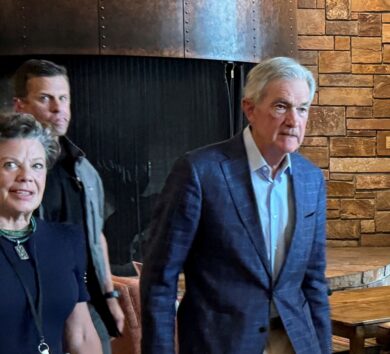
Proceeds to be used to fund Sustainable Tourism and Upgrade Infrastructure

Durrant Pate/Contributor
Jamaica is joining other similar regional tourist destinations in raising tourist taxes as part of a broader push to create more sustainable, better-equipped travel destinations across the Caribbean and the Americas.
Other similar destinations—Barbados, Mexico, Dominican Republic (DomRep), Bahamas, Belize, Aruba, and Costa Rica—are raising tourist taxes as part of a broader push to create more sustainable, better-equipped travel destinations across the Caribbean and the Americas.
According to a new report, these governments are not just increasing fees but are strategically investing the revenue into vital infrastructure and environmental protection.
Whether it’s upgrading airports, improving sewage systems, preserving national parks, or enhancing cultural sites, the goal is to support growing visitor demand while protecting the very resources that attract travellers in the first place.

Impact on travellers
This wave of changes signals a shift toward responsible tourism management, with each country using these taxes to build a stronger, greener foundation for the future of travel. Travellers booking trips to hot spots like Aruba, The Bahamas, Mexico, and other beloved destinations across the Caribbean and the Americas may notice some new line items on their invoices.
Several countries in the region have rolled out updated tourist taxes, aimed at improving sustainability, bolstering infrastructure, and enhancing the visitor experience. From updated cruise levies in Mexico to nightly hotel charges in Barbados, these fees are helping reshape the way tourism supports local economies and ecosystems.
Travel and Tour World (TTW) is reporting that a wave of new policies in countries like Jamaica, Belize, Costa Rica, and the Dominican Republic reflects a broader shift in how governments are approaching the tourism boom. Rather than simply chasing higher visitor numbers, these destinations are now prioritizing thoughtful reinvestment—putting tourist dollars to work in environmental conservation, infrastructure upgrades, and cultural preservation.
Here’s how each country is adjusting their tourism tax structure, according to TTW
Jamaica channels a US$20 fee into tourism development
Visitors landing in Jamaica pay a US$20 Tourism Enhancement Fee, which directly funds improvements to roads, airports, and cultural attractions. This charge also supports Jamaica’s global marketing efforts to strengthen Jamaica’s brand and keep the island competitive on the world tourism stage.
The government is using the funds to not only build better infrastructure but also to preserve its cultural identity for future generations.
Aruba adds a US$20 sustainability fee for air travellers
Since July 2024, Aruba has required air passengers aged 8 and older to pay a $20 sustainability fee. The government collects this charge through its Embarkation and Disembarkation (ED) card system, a mandatory step before airline check-in.
The funds are being funnelled directly into long-term environmental initiatives, with a strong focus on upgrading the island’s wastewater and sewage systems to protect its fragile ecosystem while accommodating its growing tourism sector.
The Bahamas restructures cruise passenger taxes
In 2024, The Bahamas overhauled its cruise tax system to better reflect the real costs of tourism. Passengers departing from Nassau and Freeport now pay an increased departure tax of US$23, up from US$18.
On top of that, the country introduced a US$5 environmental tourism tax and a US$2 enhancement tax.
Revenue from these charges supports island-wide environmental protection projects and efforts to boost the visitor experience, from nature reserves to tourist facilities.
Barbados ties hotel levies to room class
Barbados has embraced a tiered Room Rate Levy system that applies to all accommodations. Smaller guesthouses are charged BDS $5 per night, while luxury hotels see nightly levies up to BDS $20. For vacation rentals and villas, a 2.5% tax applies, capped at BDS $20 per night.
The government directs this funding to national tourism campaigns, airport upgrades, and the maintenance of historic and cultural attractions.
Mexico introduces a US$42 cruise passenger fee
Mexico has moved forward with one of the region’s most significant new fees. Starting in 2025, cruise passengers must pay a US$42 charge under a new federal tax law passed in late 2024. Roughly two-thirds of this revenue will fund national security projects managed by the military, while the remainder is expected to go toward modernizing ports and strengthening coastal infrastructure.
Cruise lines have pushed back, warning that the increased costs could make Mexico less competitive compared to neighbouring destinations.
Belize maintains layered exit taxes to fund conservation
Belize continues to apply a multi-part departure tax for both land and air travellers, which adds up to around US$40. This comprehensive fee includes a Border Development Fee, a Conservation Fee, and a standard Departure Tax.
The money supports critical conservation programs and funds upgrades at major exit points like airports and land border crossings, ensuring smoother transit and protecting the country’s renowned biodiversity.
Costa Rica’s US$29 departure tax supports eco-tourism
Costa Rica remains committed to sustainable travel. A US$29 departure tax applies to all travellers exiting the country, and in most cases, the cost is bundled into airline ticket prices.
Even so, the fee remains a vital source of funding for Costa Rica’s extensive network of national parks and green infrastructure. Trails, protected wildlife areas, and eco-friendly transport options all benefit from the tax.
DomRep uses a US $10 tourist card fee to fund growth
Travelers entering the Dominican Republic typically pay a US$10 tourist card fee, which is often included in airfare. This fee acts as a temporary entry permit and helps the government finance infrastructure projects, promote tourism abroad, and manage day-to-day tourism operations.
From beaches to city centres, the money supports services and upgrades that keep the country attractive to visitors.







Comments